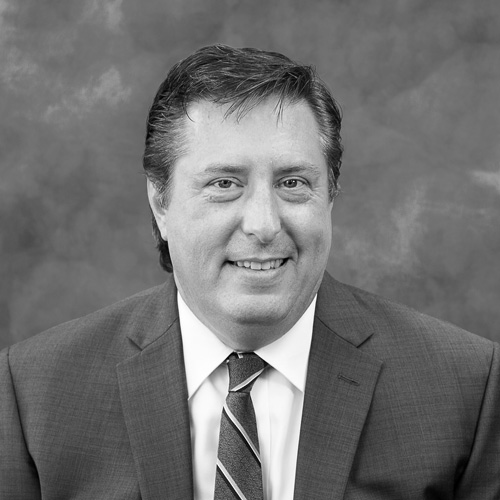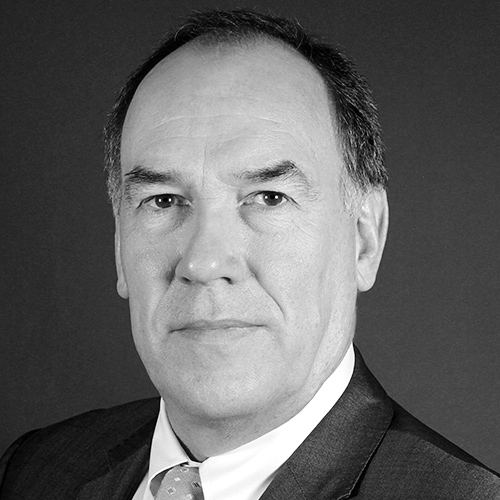Bob Hanley knows a thing or two about human resources, including the fact that what constitutes the status quo is always up for debate.
For the past three-and-a-half years, the thirty-five-year HR veteran has been the vice president and chief human resources officer for University of Chicago Medicine, a leading academic medical center in the Hyde Park neighborhood of Chicago’s South Side. Primarily, Hanley has worked to enhance employees’ well-being while balancing their needs and concerns with the goals of the organization overall.
When he joined the University of Chicago, he noticed the HR department was overly compartmentalized and made it part of his mission to better unify it.
“What was most noticeable was people that had been working in the HR function for many, many years didn’t know each other’s names,” Hanley says. “They knew that they worked in HR, they may have known you worked in the benefits area within HR, but they really didn’t interact with you, bond with you, and certainly didn’t socialize with you. That affected the quality of work and the speed in which we would deliver our services.”
Although he was still adapting to the organization, Hanley wanted to combat this issue, so he began to talk to his team about how to develop a better model for delivering services. He also started having all-hands meetings with the entire department. The meetings, which he still holds, allow team members to see what colleagues are working on and the kinds of projects that are happening around them so they learn how to get involved and offer support.
Another collaboration effort is to involve the entire department in its long-term strategic plan, not just the HR leadership team.
Frankly Philanthropic
Bob Hanley started his own charity, Hot Dogs for the Hungry, in 2011, when he lived in Columbus, Ohio, and has continued it in the Chicago area. His desire to give back inspired the charity where he and a growing number of volunteers serve hundreds of hot dogs, along with snacks and drinks, to the homeless every Saturday. Since Hanley began the charity, it’s expanded to giving out hygiene kits, clothes during the winter, and gently used backpacks.
“It is the most incredible feeling to help other people. It’s a small thing that we are doing, but in some ways it is pretty big when you stop the hunger pangs that people have,” Hanley says. “This is the real deal for me; these are people who live on the streets, who don’t know where their next meal will come from.”
“It was important for us to communicate to the team that they have an important role in our future, they have opinions, they have perspectives, and we owe it to them to be involved in the process,” Hanley says.
The team also participates in a variety of team-building events outside of the office. After all, team building helps break down barriers, builds trust, enables better relationships, and ultimately improves productivity—and it really shows today.
“Those are the things that I could point to the last three-and-half-years: high emphasis on communication, showing our appreciation across HR to each other, and recognizing the good work of each other,” Hanley says. “People raise their hands now where in the past they hadn’t.”
The main tool Hanley helped put into play to expand collaboration is the human resources business model. Knowing an organizational change like this could meet some resistance, he took a methodical, step-by-step approach to rolling out the model.
“One of my key directors basically said to me, two weeks on the job, ‘Bob, this is why I left my former organization. I didn’t sign up for this here,’” Hanley says. “So, my response to her was, ‘Just listen. Hear me out. We’ll talk about this together, and we’re going to see if this is the right solution.’ She’s one of the biggest advocates of this model today and one of my biggest supporters.”
First, Hanley made it clear this model wasn’t about cost reduction. “People begin to listen when there’s not that focus on cost,” he says.
The other thing he did was focus on the organization’s foundation first; Hanley didn’t want to bring in HR business partners and highly experienced senior employees if the foundation wasn’t right. So, the focus went toward transactional, repeatable activities that the HR team does each day, such as handling compensation and benefits administration. The first year, the focus was on developing University of Chicago Medicine’s shared-services organization, which holds a majority of the department’s resources. As Hanley put this model into motion, it was imperative that those who performed administrative tasks knew they were just as valuable to the business as someone working in a strategic role.
So, the human resources department took the repeatable activities performed daily and organized the new business model around them. There is now a call center set up, which is the first point of contact for employees, that handles more than thirteen thousand employee inquiries per quarter, measures call times, and has a case-management system. Other parts of the shared services include employee and labor relations, staffing, onboarding, and HR employee data management.
“If we can’t get the little things right, we don’t have any business dealing with the world of strategy. . . . We’re going to prove to the organization and earn our right to do the more strategic things.”
“The thought was, ‘If we can’t get the little things right, we don’t have any business dealing with the world of strategy,’” Hanley says. “So, we’re going to prove to the organization and earn our right to do the more strategic things.”
Once Hanley and his team laid the model’s foundation, they began to develop its center of expertise: smaller organizations that focused mostly on strategy, policy formulation, and designing work for the organization.
The last piece of the puzzle was to find an HR business partner. The goal was to hire just one to start, so after the partner was hired, he or she was assigned to the organization’s largest unit, Patient Care Services.
“We were going to prove to ourselves and to the organization that we could add value,” Hanley says. “I wanted to create the appetite for the organization to say, ‘Wow, how do I get one of those HR partners for my business?’”
The hire proved to be a valuable one to the organization. An HR business partner isn’t necessarily a human resources person first, so he or she brings a strong operations focus and analytical view to the business, which helps advance solutions for complex workforce challenges in Patient Care Services.
“To be successful, you have to listen to your workforce,” Hanley says. “There is nothing worse than asking me what I think, having me tell you, and then having it go in one ear and out the other. We don’t want to fall into that trap. I’ve been working in human resources for over thirty-five years, and I can tell you I hit the lottery working here.”

